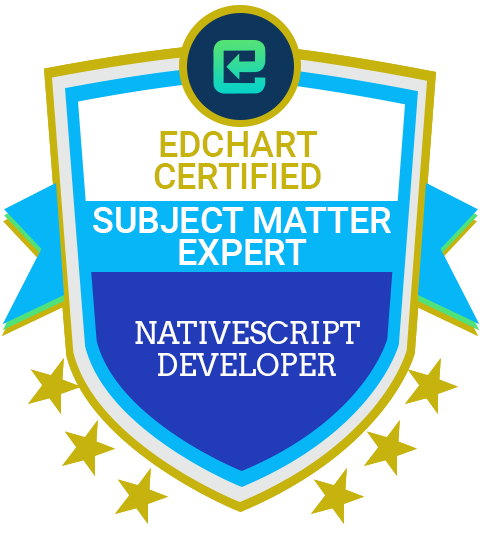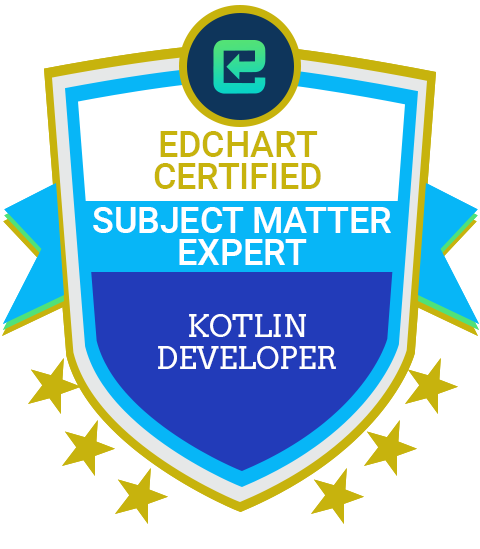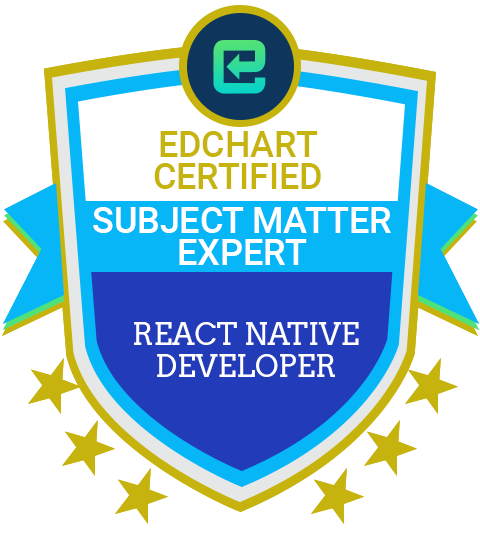
Edchart Certified
Ext JS Framework SME
Ext JS is a comprehensive and feature-rich JavaScript framework developed by Sencha, tailored for building modern web applications with unparalleled functionality and scalability. With its extensive set of UI components, data-driven architecture, and robust MVC (Model-View-Controller) architecture, Ext JS empowers developers to create sophisticated and dynamic user interfaces that rival native desktop applications. From complex data grids and charts to interactive forms and rich animations, Ext JS offers a diverse range of tools and capabilities to meet the demands of today's web development landscape. Its modular and extensible nature allows developers to easily customize and extend the framework to suit their specific project requirements, while its built-in themes and responsive design ensure a consistent and polished user experience across all devices.
ext js framework certification |ext js certification |ext js |extjs |ext js framework |sencha extjs |sencha ext js |sencha js |ext js 4 |ext js 6 |ext js angular |ext js example |ext js library |ext js react |ext js versions |extjs 7.4 |extjs jquery |extjs mvc |extjs mvvm |extjs to angular migration |extjs to react migration |extjs vue |extjs vuejs |formation extjs |framework extjs |react extjs |sencha ext js examples |sencha javascript |sencha js examples |vue extjs | |sencha extjs |sencha ext js |sencha js |checkcolumn extjs |data qtip extjs |docs sencha com ext js 6.2 |ext all debug js |ext all js |ext javascript |ext js angular |ext js example |ext js framework |ext js github |ext js in action |ext js latest version |ext js library |ext js price |ext js react |ext js sencha |ext js version |ext language_tools js |extended js |extjs bootstrap |extjs docs 4.2 |extjs example |extjs github |extjs java |extjs jquery |extjs latest version |extjs layout |extjs npm |extjs price |extjs to angular migration |extjs to react migration |extjs vue |extjs vuejs |extjs5 |extjs6 |formation extjs |framework extjs |react extjs |sencha ext js examples |sencha ext react |sencha extjs examples |sencha javascript |sencha js examples |vue extjs
| India: |
|
|---|---|
|
Other Countries: |
|
Ext JS Framework Certification: A Fast-Track to Career Advancement
If you're looking for a quick, convenient, and globally recognized certification, the Ext JS Framework Certification is the perfect choice. This test-only certification offers professionals the opportunity to showcase their expertise in the Ext JS Framework without the need for long courses or complex learning modules. Whether you're an experienced developer or someone looking to upskill, this certification allows you to demonstrate your proficiency and gain instant certification after passing a single test.
Why Choose the Ext JS Framework Certification?
The Ext JS Framework Certification is not just a regular certificate; it is recognized and validated by Credly for global credentials. This means that employers worldwide will acknowledge your achievement, further enhancing your career prospects. By earning this Best Ext JS Framework Certification, you're taking a step toward opening doors to new job opportunities, promotions, and the ability to stand out in the competitive tech industry.
Instant Certification: Fast, Efficient, and Accessible
One of the most significant advantages of the Ext JS Framework Certification Online is its instant certification process. With no need for long-term classes or learning modules, you can quickly prepare for and take the test to earn your certification. Once you pass the test, you’ll receive your certificate immediately, allowing you to update your resume and LinkedIn profile without delay. This is a valuable option for professionals who need credentials quickly, without wasting time.
Industries and Careers That Require This Certification
The Ext JS Framework Certification is ideal for professionals in several industries, especially those in software development and IT. Companies looking to develop and maintain enterprise-level web applications often rely on the Ext JS framework. This certification ensures you have the skills required to work with this powerful framework, which is why many organizations seek certified professionals.
Common career paths for individuals with this certification include:
- Front-End Developer
- Full-Stack Developer
- Web Application Developer
- UI/UX Developer
These professionals are in high demand, and having an Ext JS Framework Certification can make you a preferred candidate for roles requiring expertise in JavaScript frameworks.
Testing Process: Simple, Fast, and Effective
The test-only certification process for the Best Ext JS Framework Certification is designed to be straightforward and hassle-free. The test evaluates your practical knowledge and ability to apply Ext JS framework concepts, ensuring you possess the necessary skills. There’s no need for extended preparation – simply take the test when you’re ready, and upon passing, you’ll be awarded your certification immediately. This no learning required certification is perfect for professionals who are already familiar with the framework and want to validate their skills quickly.
Features of the Ext JS Framework Certification
- Instant Certification: Receive your certification immediately after passing the test.
- Global Recognition: Recognized by Credly and trusted by companies worldwide.
- No Classes Required: Skip the lengthy learning modules and take the test directly.
- Test-Only Process: Focus solely on testing your knowledge without the burden of traditional coursework.
Benefits of Having Our Certification
The Ext JS Framework Certification offers numerous benefits for professionals:
- Career Advancement: The certification opens doors to higher-paying jobs and promotions.
- Industry Recognition: Recognized by global companies and validated by Credly for international credentials.
- Time Efficiency: With instant certification available through a test-only process, you can quickly enhance your resume and LinkedIn profile.
- Flexibility: Ideal for professionals who have the knowledge and experience but need a formal recognition of their skills.
This certification stands out from others because of its speed, convenience, and broad industry recognition. By opting for the Ext JS Framework Certification, you are investing in a credential that truly enhances your professional profile without requiring extensive hours spent on learning modules.
In conclusion, the Ext JS Framework Certification is a fast, efficient, and valuable way to advance your career. It’s perfect for professionals who want to showcase their expertise without spending weeks or months on coursework. Whether you’re an experienced developer or just looking to validate your skills, this test-only certification gives you an edge in the competitive job market. Get recognized globally, earn your instant certification, and take your career to new heights today! Remember to earn your Ext JS Framework Certification and get validated through Credly for professional recognition!
| Exam Timing: | 60 (Mins) |
|---|---|
| Pass Per | 60% |
| Level | Expert |
| Roles | Hybrid Mobile App Developer |
| No. of Questions | 30 |
International Recognized Certificates
Get Your Verifiable and Shareable International Digital Certificates
Industry-oriented Skill Sets
Industry experts suggested knowledge-centric Certificates
Edchart Global User Profile
Edchart Global User Profile for each candidate to share and have.




